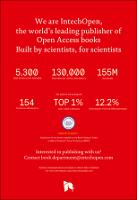Chapter Silica-Based Nanovectors: From Mother Nature to Biomedical Applications
| dc.contributor.author | Terracciano, Monica | |
| dc.contributor.author | Lamberti, Annalisa | |
| dc.contributor.author | Rea, Ilaria | |
| dc.contributor.author | Stefano, Luca De | |
| dc.contributor.author | Santos, Hélder A. | |
| dc.contributor.author | Martucci, Nicola M. | |
| dc.contributor.author | Tino, Angela | |
| dc.contributor.author | Ruggiero, Immacolata | |
| dc.contributor.author | Rendina, Ivo | |
| dc.contributor.author | Migliaccio, Nunzia | |
| dc.contributor.author | Tortiglione, Claudia | |
| dc.date.accessioned | 2021-06-02T10:08:26Z | |
| dc.date.available | 2021-06-02T10:08:26Z | |
| dc.date.issued | 2016 | |
| dc.identifier | ONIX_20210602_10.5772/63191_289 | |
| dc.identifier.uri | https://library.oapen.org/handle/20.500.12657/49175 | |
| dc.description.abstract | Energy management in households gets increasingly more attention in the struggle to integrate more sustainable energy sources. Especially in the electrical system, smart grid systems are envisioned to be part in the efforts towards a better utilisation of the energy production and distribution infrastructure. The Home Energy Management System (HEMS) is a critical infrastructure component in this endeavour. Its main goal is to enable energy services utilising smart devices in the households based on the interest of the residential consumers and external actors. With the role of being both an essential link in the communication infrastructure for balancing the electrical grid and a surveillance unit in private homes, security and privacy become essential to address. In this chapter, we identify and address potential threats Home Energy Management Platform (HEMP) developers should consider in the progress of designing architecture, selecting hardware and building software. Our approach starts with a general view of the involved stakeholders and the HEMS. Given the system overview, a threat model is constructed from the HEMP developer's point of view. Based on the threats that have been detected, possible mitigation strategies are proposed taking into account the state of the art of technology for securing platforms. | |
| dc.language | English | |
| dc.subject.classification | bic Book Industry Communication::T Technology, engineering, agriculture::TJ Electronics & communications engineering::TJF Electronics engineering::TJFD Electronic devices & materials::TJFD5 Semi-conductors & super-conductors | |
| dc.subject.other | smart grid, IoT, security, privacy, cloud, web service, service‐oriented architecture | |
| dc.title | Chapter Silica-Based Nanovectors: From Mother Nature to Biomedical Applications | |
| dc.type | chapter | |
| oapen.identifier.doi | 10.5772/63191 | |
| oapen.relation.isPublishedBy | 09f6769d-48ed-467d-b150-4cf2680656a1 | |
| oapen.relation.isFundedBy | 7292b17b-f01a-4016-94d3-d7fb5ef9fb79 | |
| oapen.collection | European Research Council (ERC) | |
| oapen.grant.number | 310892 | |
| oapen.grant.acronym | POROUS SILICON NANOV |

